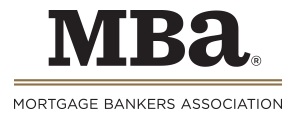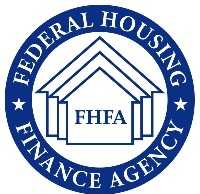WASHINGTON, D.C. – November 17, 2011 – (RealEstateRama) — The seasonally adjusted delinquency rate for mortgage loans on one-to-four-unit residential properties fell to 7.99 percent in the third quarter of 2011, according to data from the Mortgage Bankers Association’s (MBA) National Delinquency Survey. This is the lowest level recorded since the fourth quarter of 2008.
The third quarter seasonally adjusted rate of 7.99 percent is a decrease of 45 basis points from the second quarter of 2011, and a decrease of 114 basis points from one year ago. The non-seasonally adjusted delinquency rate increased nine basis points to 8.20 percent this quarter from 8.11 percent last quarter.
The percentage of loans on which foreclosure actions were started during the third quarter was 1.08 percent, up 12 basis points from last quarter and down 26 basis points from one year ago. The percentage of loans in the foreclosure process at the end of the third quarter was 4.43 percent, unchanged from the second quarter and four basis points higher than one year ago.
The serious delinquency rate, the percentage of loans that are 90 days or more past due or in the process of foreclosure, was 7.89 percent, an increase of four basis points from last quarter, and a decrease of 81 basis points from the third quarter of last year.
The delinquency rate includes loans that are at least one payment past due but does not include loans in the process of foreclosure. The combined percentage of loans at least one payment past due or in foreclosure was 12.63 percent on a non-seasonally adjusted basis, a nine basis point increase from last quarter, but was 115 basis points lower than a year ago.
“While the delinquency picture changed for the better in the third quarter, the foreclosure data indicated that we are not out of the woods yet and that the issues continue to vary by geography. A closer look shows that there are different trends driving these results. The increase in the foreclosure starts rate this quarter was driven by large increases from just a few servicers, concentrated in certain ‘hardest hit’ states. For most servicers, the foreclosure starts rate was little changed over the quarter. In these ‘hardest hit’ states, the few large changes reflects the progression of delinquent loans through the foreclosure process. Outside of these states, improvement has continued, although at a slow pace due to the still-weak job market,” said Michael Fratantoni, MBA’s Vice President of Research and Economics.
“The thirty day delinquency rate, the measure of early stage delinquency, reached its lowest level since the second quarter of 2007, a sign that new mortgage delinquencies have slowed. Foreclosure starts, however, increased this quarter, the first increase in a year after declining for three straight quarters, and is now back up to the levels of the first quarter of 2011. This is largely driven by loans leaving the loss mitigation process and the ending of state remediation programs and foreclosure moratoria.
“Twelve states saw an unchanged or lower foreclosure starts rate for the quarter. Among those states, New Jersey, Arkansas and Washington had significant decreases across all loan types, an implication that there might have been state specific factors causing what might be a temporary stop on the initiation of the foreclosure process. These states also saw significant increases in the percentage of loans that are 90+ days delinquent.
“The percentage of loans in the foreclosure process was unchanged but up from the third quarter of last year. The foreclosure inventory rate remains quite elevated, but is at the lowest point since last year. Similar to last quarter, the top five states in terms of the number of loans in foreclosure make up more than 52 percent of the national total. The disparity in loans in foreclosure between the judicial and non-judicial states continues to widen as backlogs continue with more new foreclosures entering the pipeline.”
Change from last quarter (second quarter of 2011)
On a seasonally adjusted basis, the overall delinquency rate decreased for all loan types. The seasonally adjusted delinquency rate decreased 42 basis points to 4.32 percent for prime fixed loans and decreased 103 basis points to 10.73 percent for prime ARM loans. For subprime loans, the delinquency rate decreased 138 basis points to 21.24 percent for subprime fixed loans and decreased 211 basis points to 25.07 percent for subprime ARM loans. FHA and VA loans also saw declines, with the delinquency rate decreasing 53 basis points to 12.09 percent for FHA loans and decreasing 47 basis points to 6.58 percent for VA loans.
The percent of loans in foreclosure, also known as the foreclosure inventory rate, remained unchanged from last quarter at 4.43 percent. The foreclosure inventory rate for prime fixed loans remained unchanged at 2.56 percent. The rate for prime ARM loans decreased 11 basis points from last quarter to 9.05 percent. The rate for subprime ARM loans increased 50 basis points to 22.73 percent and the rate for FHA loans increased three basis points to 3.27 percent. The rate for VA loans decreased five basis points to 2.25 percent. Subprime fixed loans saw a decrease of 19 basis points to 10.82 percent.
The non-seasonally adjusted foreclosure starts rate increased seven basis points for prime fixed loans to 0.69 percent, 34 basis points for prime ARM loans to 2.16 percent, six basis points for subprime fixed to 2.50 percent and 103 basis points for subprime ARMs to 4.65 percent. The foreclosure starts rate increased five basis points for FHA loans to 0.78 percent and one basis point for VA loans to 0.56 percent.
Change from last year (third quarter of 2010)
Given the challenges in interpreting the true seasonal effects in these data when comparing quarter to quarter changes, it is important to highlight the year over year changes of the non-seasonally adjusted results.
Compared with the third quarter of 2010, the foreclosure inventory rate decreased 100 basis points for prime ARM loans, while the foreclosure inventory rate increased 11 basis points for prime fixed loans, 194 basis points for subprime fixed, 95 basis points for subprime ARM loans, five basis points for FHA loans and 11 basis points for VA loans.
Over the past year, the non-seasonally adjusted foreclosure starts rate decreased 24 basis points for prime fixed loans, 20 basis points for prime ARM loans, 28 basis points for subprime fixed, 46 basis points for FHA loans and 30 basis points for VA loans. The foreclosure starts rate increased 56 basis points for subprime ARM loans.
If you are a member of the media and would like a copy the third quarter National Delinquency Survey report, please contact Matt Robinson at ">. If you are not a member of the media and would like to purchase the survey, please visit www.mortgagebankers.org/NDS or e-mail ">
.
###
The Mortgage Bankers Association (MBA) is the national association representing the real estate finance industry, an industry that employs more than 280,000 people in virtually every community in the country. Headquartered in Washington, D.C., the association works to ensure the continued strength of the nation’s residential and commercial real estate markets; to expand homeownership and extend access to affordable housing to all Americans. MBA promotes fair and ethical lending practices and fosters professional excellence among real estate finance employees through a wide range of educational programs and a variety of publications. Its membership of over 2,200 companies includes all elements of real estate finance: mortgage companies, mortgage brokers, commercial banks, thrifts, Wall Street conduits, life insurance companies and others in the mortgage lending field. For additional information, visit MBA’s Web site: www.mortgagebankers.org.














